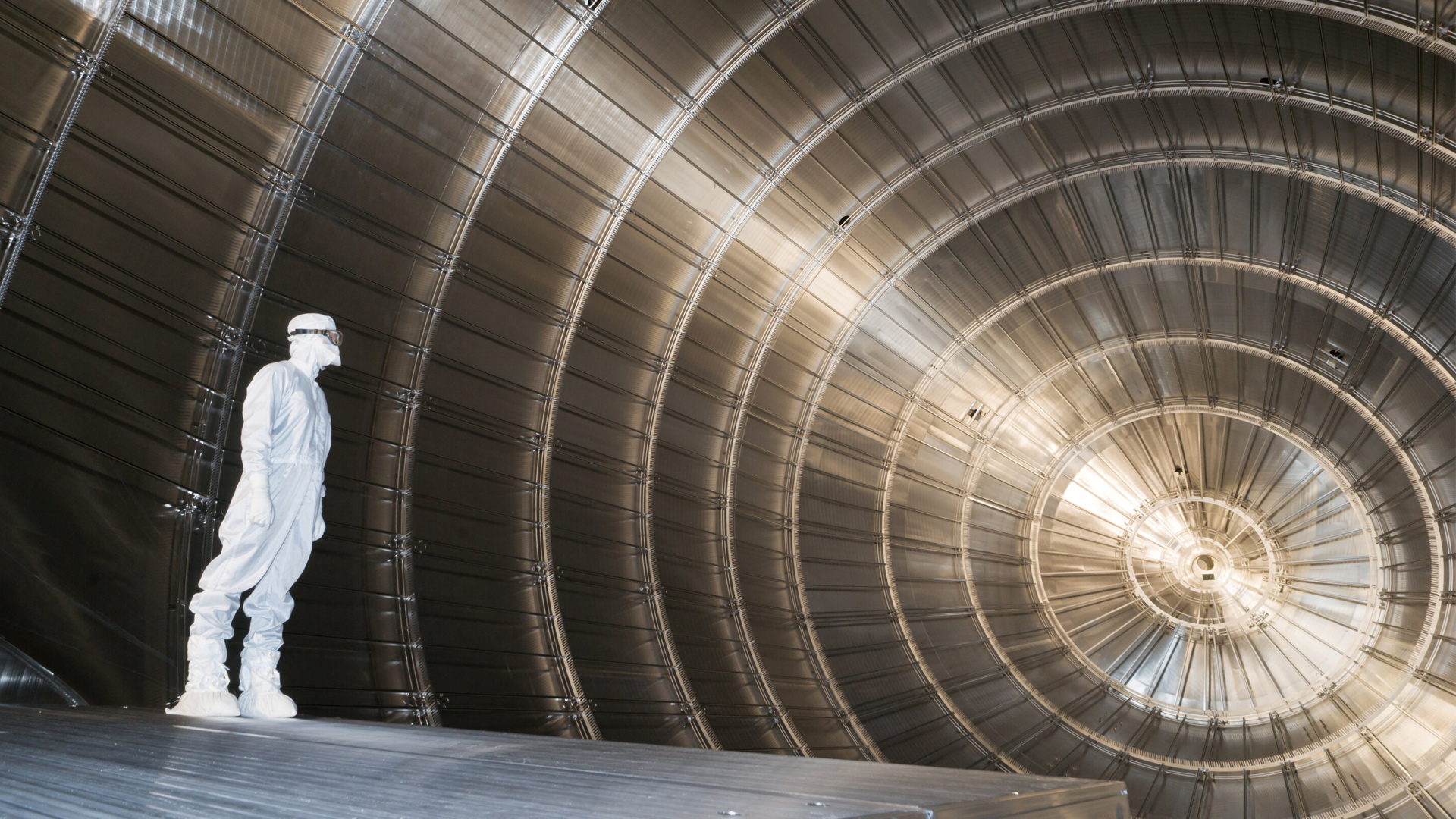They slip through walls, pass through planets, and rarely leave a trace. Can you guess what “they” are? We’re talking about neutrinos, ghostly particles that are born in nuclear reactions and exploding stars, and seem to defy the very rules of the universe.
For decades, physicists believed they had no mass at all. Then, surprisingly, some observations suggested that neutrinos do have mass, but this doesn’t fit within the known laws of physics and challenges scientists to think beyond the Standard Model (BSM).
Now, researchers involved in the KATRIN experiment have also come across something that is related to neutrinos and can’t be explained by the physics we know. The results from their latest study place powerful limits on unknown neutrino interactions—rare events during which neutrinos bump into or affect other particles.
“With only a small part (5%) of the final KATRIN dataset, we were already able to set competitive constraints on some of the investigated new neutrino interactions compared to the global constraints from other low-energy experiments,” Caroline Fengler, one of the researchers involved in the KATRIN experiment, said.
Catching neutrinos using the energy trail of electrons
The KATRIN experiment (short for Karlsruhe Tritium Neutrino experiment) is no ordinary setup. It uses a highly radioactive gas called tritium, which undergoes beta decay, spitting out an electron and a neutrino in the process.
Normally, scientists would try to detect the neutrino itself. However, KATRIN does something smarter, it watches the electron. The energy carried by that electron gives a clue about the mass and behavior of the escaping neutrino. “The shape of the recorded beta spectrum then contains information about the neutrino mass and other BSM physics contributions,” Fengler added.
This detection may sound easy, but in reality, it is one of the most difficult tasks for physicists. Neutrinos interact so weakly with matter that they pass through entire planets without flinching. The energy differences researchers are looking for in the electrons are minuscule, just a fraction of an electronvolt.
To pick up such tiny shifts, KATRIN relies on a massive, ultra-precise spectrometer and one of the world’s most intense tritium sources. However, the authors of the current study weren’t just interested in measuring neutrino mass. They wondered if the electron’s energy could be hinting at hidden forces that we don’t yet understand.
According to several proposed theories, neutrinos might not interact with matter in just one way. There could be general neutrino interactions, which are unknown effects caused by hypothetical particles like right-handed W bosons, charged Higgs particles, or leptoquarks.
These aren’t part of the standard model, but they keep coming up in many next-generation theories. If any of these effects exist, they would slightly distort the shape of the beta decay spectrum. So to dig deeper, the researchers dove into their second round of data, representing just five percent of what KATRIN will eventually collect.
They carefully analyzed the shape of the electron energy distribution, searching for those tiny deformations. Interestingly, even with this early data, they were able to set tight new limits on a range of possible new interactions, matching or even improving on results from similar experiments worldwide
The next step in neutrino research
Although KATRIN hasn’t yet spotted direct evidence of new neutrino forces, the fact that it’s sensitive enough to narrow the possibilities is a big achievement. Most experiments either go deep underground or into massive detectors to hunt for rare neutrino events.
KATRIN is doing something different; it’s using precision to trap subtle deviations right at the source, and this strategy is paying off. “We are already working on further improving our sensitivity on the general neutrino interactions with KATRIN by extending the data set and fine-tuning our analysis approach,” Fengler notes.
In 2026, the KATRIN project will enter its next phase, TRISTAN, which is designed to look for heavier, so-called sterile neutrinos. These particles, if they exist, could help explain the mystery of dark matter.
As of now, the standard model still holds. However, with every sliver of new data, KATRIN is chipping away at its edges, mapping out where new physics could be hiding.
The study is published in the journal Physical Review Letters.
